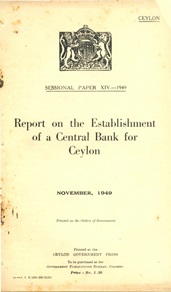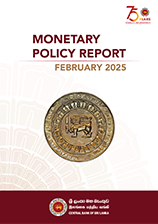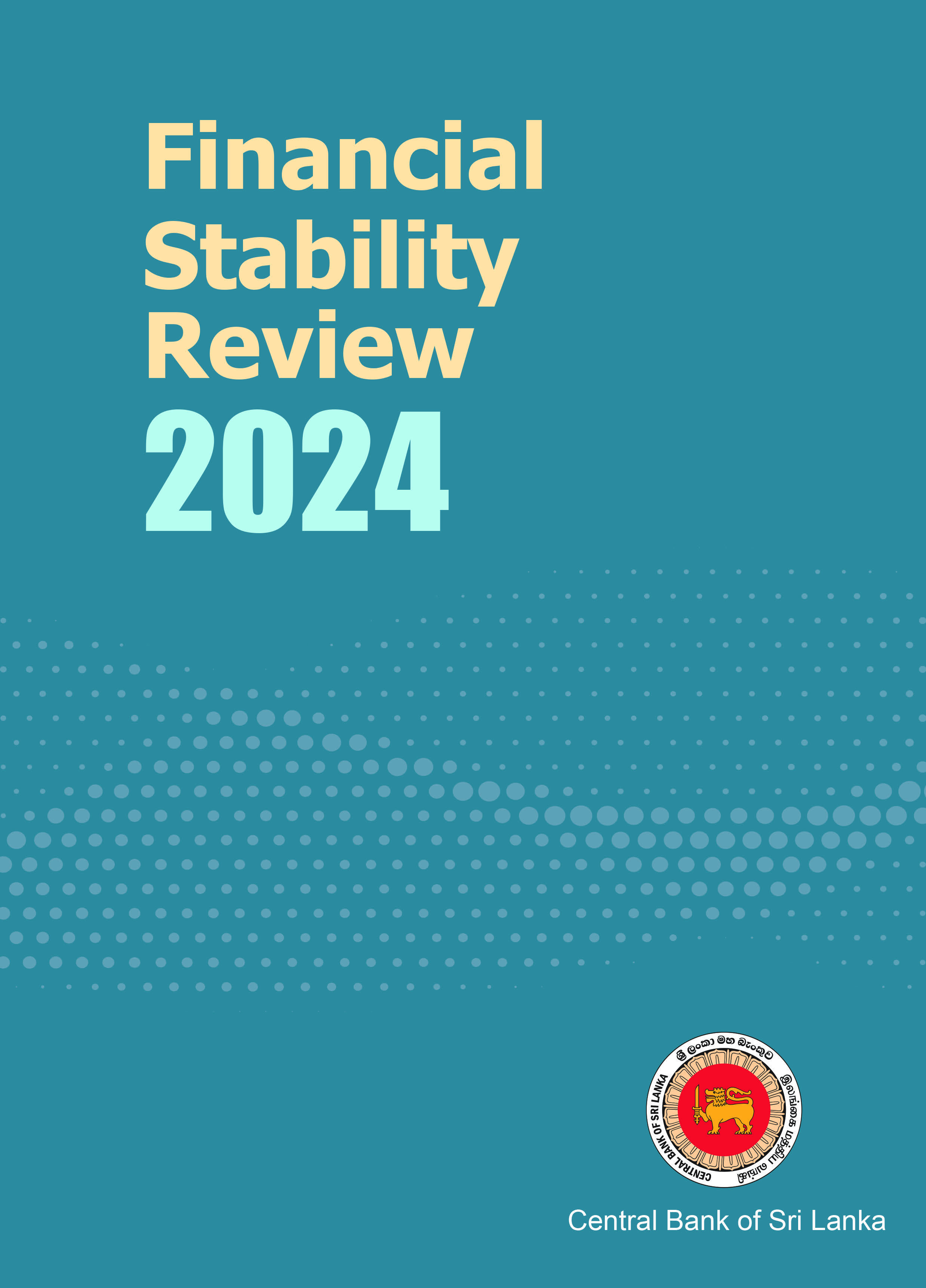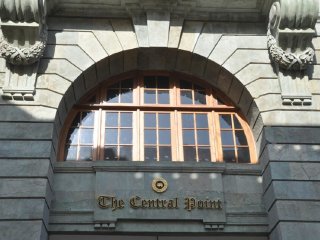Financial Markets
Money Market
The Money Market is the market where maturity of the financial instruments traded are one year or less.
Money market in Sri Lanka consists of;
(i)Inter-Bank Call Money Market
(ii)Treasury bill Market
(iii)Domestic Foreign Exchange Market.
The major task of the Money Market is to facilitate the liquidity management in the economy.
The main issuers in the Money Market are
the Government,
banks and
private companies,
The main investors are
Banks
Insurance companies
Pension and provident funds
Capital Market
The Capital Market is the market for trading in assets for maturities of greater than one year, such as Treasury bonds, private debt securities (bonds and debentures) and equities (shares).
The main purpose of the Capital Market is to facilitate the raising of long-term funds. The main issuers in the Capital Market are the Government, banks and private companies, while the main investors are pension and provident funds and insurance companies.
Inter-Bank Call Money Market
The inter-bank call money market is an overnight market that mainly assists commercial banks in meeting their immediate liquidity requirements by facilitating lending and borrowing among banks. These transactions are very short term in nature and reflect demand for and supply of liquidity in the market..
The interest rate applicable in the call money market is called inter-bank call rate. AWCMR is the average call rate weighted by the values of the transactions. It is computed and published by the CBSL on each working day.
Orderly and stable functioning of the inter-bank call money market is important to maintain the short term interest rates and minimising the liquidity risk in the banking system. Frequent fluctuations of inter-bank call rates, even within the boundaries of the standing rate corridor, is not desirable as such changes could inflict larger volatility in other market rates/prices which uses call rate as the benchmark.
The Stability of the money market is supported by managing market liquidity proactively by the provision of Standing deposit facility and Standing lending facilities by the Central Bank of Sri Lanka (CBSL), at the relevant policy rates.
The objective of implementation of monetary policy is to maintain stability in the money market.
Monetary Policy is implemented by conducting open market operations (OMO). That is, through;
(i)providing standing facilities,
(ii)enforcing Statutory Reserve Requirement (SRR) and
(iii)Moral Suasion
In order to achieve this, Central Bank of Sri Lanka (CBSL) tries to maintain the Inter-Bank Call Rate (the Call Rate) at a desired level with less fluctuations, within the Standing Rate Corridor (SRC). The desired level of the call rate is determined in line with the needs of the monetary policy.
Standing Rate Corridor (SRC)
The CBSL's SRC consists of two policy rates;
(i)Standing Deposit Facility Rate (SDFR)
(ii)Standing Lending Facility Rate (SLFR)
These two rates provide a lower bound and upper bound respectively, to call rates.
The purpose of the corridor is to limit the potential large fluctuations in the short-term interest rates in the market.
These rates, which are the Central Bank's “signalling mechanism” on its monetary policy stance, are reviewed on a regular basis, usually once a month, and revised if necessary.
Changes in the CBSL’s policy interest rates have an immediate effect on interest rates in the inter-bank call money market.
Changes in the call market rates could lead, within a very short period, to changes in other short-term money market interest rates, such as the yield on Treasury bills, commercial paper and the short-term lending rates of banks. These changes could, with a time lag, affect the medium-term lending and deposit rates of banks, and other lending institutions as well as other market yields.
Standing Facilities
These are facilities under which participating institutions (PIs), i.e., Licensed Commercial Banks (LCBs) and Primary Dealers(PDs), either obtain funds from or deposit funds with the CBSL, for a day. Hence, these are overnight facilities. The PIs can deposit their excess funds with the CBSL at the Standing Deposit Facility Rate (SDFR) and they can borrow funds, by pledging government securities, to meet their liquidity needs from the CBSL at the Standing Lending Facility Rate(SLFR). Standing Lending Facility (SLF) is a reverse repo facility where PIs sell their securities to the CBSL with an agreement to buy them back at the SLFR.
Domestic Foreign Exchange Market
The domestic foreign exchange market in Sri Lanka is two- fold;
-The client or retail market
This includes transactions involving individual or institutional customers
-The inter-bank or wholesale market
-This is mainly organized among authorized dealers in forex exchange, which comprises all licensed commercial banks.
-This market helps to manage foreign exchange liquidity within the banking system through currency conversion.
The two main functions in foreign exchange market
(i)to convert currency of one country into a currency of another
(ii)to help minimize the risks arising from changes in the exchange rate through various derivative products.
Above features of the foreign exchange market facilitate
(i)funding imports
(ii)converting export proceeds
(iii)other foreign currency transactions.
The main risk in the foreign exchange market
The main risk is the volatility in the exchange rate; i.e., undue fluctuations in the rate at which one currency is converted in to another currency.
If the volatility is excessive it would create instability in the foreign exchange market and thereby would affect the value of foreign currency assets and liabilities of individual institutions. There are derivative instruments available in the foreign exchange market such as swaps, options and forwards which help minimize the risk of exchange rate volatility.
Transactions in the foreign exchange market are carried out on
(i)cash basis or
(ii)Tom basis or
(iii)spot basis or
(iv)forward basis
-Cash basis is for immediate delivery of purchases/sales of a foreign currency on the same day (Cash basis),
-the next business day (Tom basis) or
-within two business days (Spot basis).
-The forward basis is for the purchase/sale of a foreign currency at a price specified now with the delivery and settlement at some future date exceeding two business days.
Sri Lanka has a floating exchange rate system since 2001 which allowed the independent adjustment of the exchange rate according to the market forces of demand and supply. However, there could be interventions in the market for the purpose of curbing excess volatility in the exchange rate.
The CBSL prescribes maximum net open position (NOP) limits for LCBs and closely monitors the activities in the domestic foreign exchange market to ensure an orderly functioning of the market.
Government Securities Market
Treasury-Bill Market
-The Treasury bill market is another segment of the Money Market.
-Treasury bills are highly liquid money market instruments that provide financial institutions with an alternate source of liquidity and investment.
-Furthermore, interest rate movements in the Treasury bill market provide a benchmark for the short-term credit market. Hence, changes in the volumes and rates in the Treasury bill market affect the cost, profitability and liquidity of financial institutions.
-Treasury bills are also the main securities used as collateral by the Central Bank in the conduct of its open market operations.
Treasury-Bond Market
Treasury Bond is a medium and long term debt instrument issued by the Government of Sri Lanka under the Registered Stock and Securities Ordinance No. 7 of 1937 (as amended) when it raises domestic public debt for budgetary purposes.
As an Agent of the Government of Sri Lanka, the Public Debt Department of the Central Bank of Sri Lanka (CBSL) issues the Treasury bonds, pays interest on due dates and repays the principal on maturity.
In terms of annual borrowing targets specified in the Appropriation Act which is approved by the Parliament annually, the Government of Sri Lanka is authorized to issue Treasury bonds.
The Main Features of Treasury Bonds are:
Risk free, gilt edged debt instrument
Maturities are available with 2-20 years
It carries half yearly coupon payments and the principal is repaid on maturity
Yield rates are determined by the market
Tradable instrument in the secondary market
Issued in scripless form
Benefits Derived by Investing in Treasury Bonds
It is an absolutely risk free investment, since it is issued by the sovereign government. Hence, they are called gilt-edged securities meaning that they are covered by gold
You can get the highest rate of interest since the yield rates are determined in the market.
Since these bonds are tradable in the secondary market, you can obtain instant liquidity by selling them in the market.
All receipts of interest and maturity proceeds are fully repatriable.
You could also have a joint investment with some other person or persons.
You are not subject to further taxation, since a withholding tax of 10 percent is charged at source.
No stamp duty is payable on these bonds.
The CBSL which maintains these investments in state of the art Scripless Security Settlement System and the fully automated Central Depository System (CDS).
Applying for Treasury Bonds
Treasury bonds can be purchased at any time through Primary Dealers (PDs) or Licensed Commercial Banks (LCBs) registered with the CBSL. PDs are the institutions appointed by the CBSL for trading in Government securities.
Treasury bonds can be purchased from the secondary market or by bidding in the primary auctions through PDs.
For the purpose of fund transfers, a Rupee account named “Treasury bond Investment External Rupee Account (TIERA)” can be opened in an LCB in Sri Lanka.
Security account in the CDS maintained by CBSL will be opened by the LCB/PD after the completion of the transaction.
Availability of Treasury Bonds
Foreign investors can purchase up to 10 % of the total outstanding Treasury bonds at any given time. Eg. As at November 30, 2007, Treasury bond outstanding stock was Rs. 1053 bn. Accordingly, Rs. 105.3 bn. is available for foreign investors. Eligible foreign investors are permitted to purchase, sell or transfer Treasury bonds with any maturity period.
Interest and maturity proceeds relating to Treasury bonds are credited on due dates directly to the investor's account through LCB/PD who are responsible to pay dues on due dates.
Obtaining information on Treasury Bonds
-Details on available Treasury bonds and prevailing market rates can be obtained from LCBs, PDs and CBSL Website (www/cbsl.gov.lk)
-Details on current auctions can be obtained from LCBs and PDs
-Any detail on this scheme can be obtained from the Public Debt Department of the CBSL.
Corporate Debt Securities Market
Commercial Paper Market
Commercial papers (CPs) are short-term, non-collateralised (unsecured) debt securities issued by private sector companies to raise funds for their own use, by banks and other financial intermediaries. CPs are generally issued by creditworthy (high-rated) institutions in large denominations and have additional bank guarantees of payment. CPs are usually sold at a discount, although some are interest bearing.
Corporate Bond Market
Corporate bonds are medium or long-term securities of private sector companies which obligate the issuer to pay interest and redeem the principal at maturity. Corporate bonds that are not backed by a specific asset are called debentures.
Corporate Debentures
Debentures are unsecured, medium or long term, interest-bearing bonds issued by private sector companies, banks and other financial institutions that are backed only by the general credit of the issuer. Debentures are usually issued by large, well-established institutions. The holders of debentures are considered creditors and are entitled to payment before shareholders in the event of the liquidation of the issuing company
Share/Equity Market
Shares are securities representing a portion of the ownership of a company that are a claim on the company's earnings and assets.
Shareholders are paid dividends which are a percentage of the profits of the company.
Share market operations in Sri Lanka began during the British colonial period with the inception of Colombo Share Brokers‟ Association in year 1896 and was renamed in 1990 as Colombo Stock Exchange (CSE).
The operations of the equity market are highly sensitive to the changes in the political and peace environment in the country as in most of other markets. In addition, the market performance is closely related to the sound fundamentals and profitability of key players in the market. The financial institutions exposure to the equity market through investment and lending activities are low and therefore, impact of equity market operations to the financial system stability is relatively low










